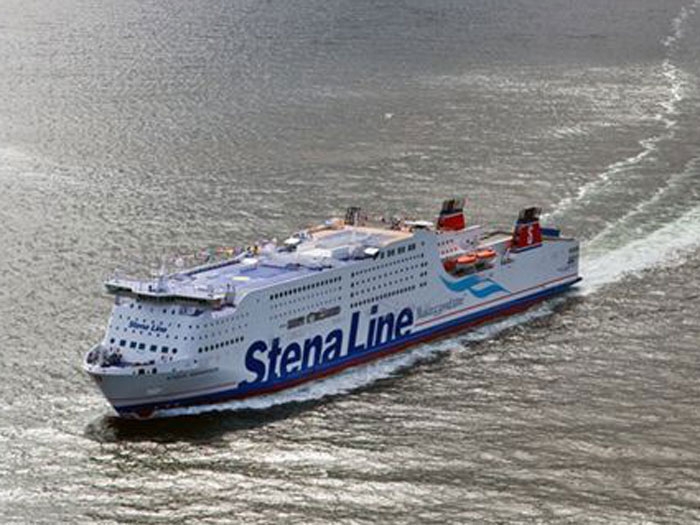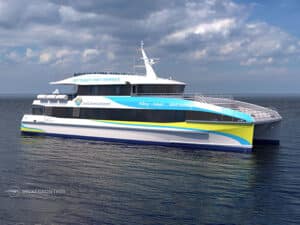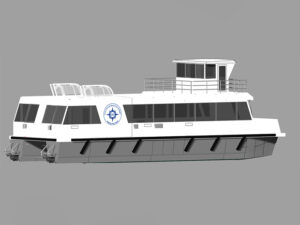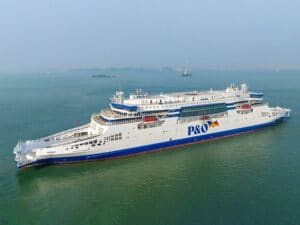
Stena to operate 1,500 passenger ferry on methanol
Written by Nick Blenkey
NOVEMBER 19, 2014 — One of the world’s biggest ferry companies, Sweden’s Stena Line, says it is to become the first operator in the world to run a large 1,500 passenger ferry on methanol, drastically reducing emissions compared to today’s standard fuel.
Stena Line has decided to convert one of its ships sailing between Gothenburg and Kiel to methanol propulsion. The 240 meter long ferry Stena Germanica will become the first ship in the world to run on methanol in early 2015. The project is being carried out in cooperation with engine manufacturer Wärtsilä, the port of Gothenburg, the port of Kiel and the world’s largest methanol producer and supplier Methanex Corporation.
Stena Germanica will be converted at Remontowa Shipyard in Poland starting January 2015, the process is expected to take six weeks and is financially supported by the EU “Motorways of the Seas” initiative. Total project cost is about EUR 22 million.
“At Stena Line we are extremely proud of contributing to the development of our industry. Our focus has always been on innovation for the benefit of both customers and society at large and this is a prime example when this goes hand in hand. We are constantly evaluating different fuels for the future and to be first in the world with a methanol conversion is a big step towards sustainable transportation. The project has been possible thanks to the great teamwork and collaboration between our technical staff, Wärtsilä and Methanex”, says Carl-Johan Hagman, CEO of Stena Line.
Wärtsilä has developed the new engine conversion kit and ship application in cooperation with Stena Teknik. The dual fuel engine will use methanol as the vessel’s main fuel grade but will have the ability to use MGO (Marine Gas Oil) as a back-up.
Methanol is a clear, colorless biodegradable fuel that can be produced from natural gas, coal, “biomass,” or even CO2, says Stena. Methanol plays a key role in the energy sector as a clean and cost competitive alternative fuel and energy resource. By using methanol emissions of sulfur (SOx) will be reduced about 99%, nitrogen (NOx) 60%, particles (PM) 95% and carbon dioxide (CO2) 25% compared with today’s fuel.
From early 2015, vessels in the Baltic and North Sea SECA area, will have to use fuel with very low sulfur content of 0.1% (today the fuel restriction is 1.0%). Stena says that MGO meeting the new sulfur limit will be about 40-50% higher in price compared to the HFO (heavy fuel oil) today.
Stena Line is running a number of projects to look at other alternative fuels and different techniques for emission purification such as LNG, electric propulsion and scrubbers.
“Due to our size we have a broad perspective on handling the new sufur regulations and it is likely we will use some different types of solutions in the coming years. However, based on the results of the methanol project we are intending to convert additional ferries, says Stena Line CEO Carl-Johan Hagman.
Stena Line says methanol has the potential to be an important fuel for the shipping industry in the future. The emissions reductions are similar to those achieved using LNG but the need for infrastructure is much less and handling is simpler.
Since 2005 Stena Line has worked to reduce its environmental impact within its Energy Saving Programme, which has successfully reduced vessel energy consumption by on average 2,5 % every year.
“It is a project that involved several companies in the Stena Sphere, which makes it very special for us. Stena Line, Stena Teknik, Stena Bulk, Stena RoRo and Stena Oil have all been involved with their respective areas of expertise. This internal collaboration made this possible. Naturally, adapting and converting Stena Lines fleet of some 40 ferries to the new regulations in the near future is a very tough task which will both take time, effort and money”, says Carl-Johan Hagman.
Stena Germanica
LOA: 240 meter Built: 2001
Cars:300 Passengers:1,500
Lanemeters: 4,000
Engine: Wärtsilä 8ZAL 40S MD producing 32,000 horsepower





Leave a Reply
You must be logged in to post a comment.